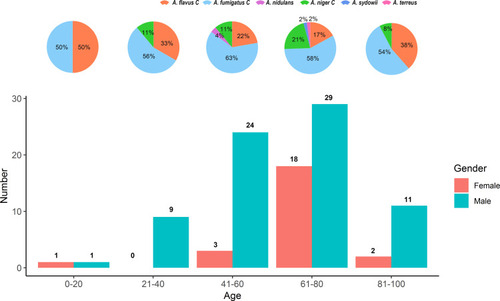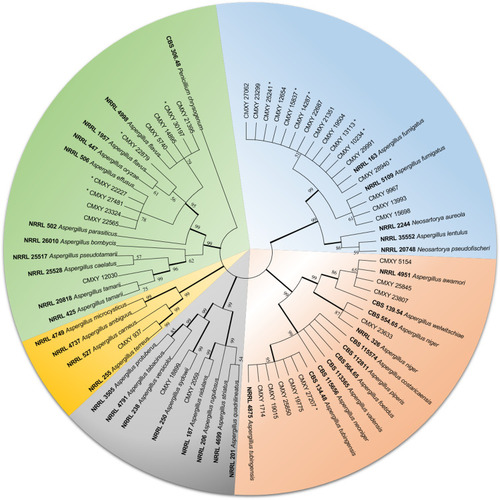Figures & data
Figure 1 Distribution of Aspergillus spp. in the lower respiratory tract of hospitalized patients of different ages and sexes in Shanghai, China. (The top pie chart shows Aspergillus species distribution within each of the five 20-year age groups, 0–20; 21–40; 41–60; 61–80; and 81–100. The bottom bar graph shows the number of Aspergillus isolates from the two sexes for each of the five age groups. Aside from the 0–20 age group where only two isolates were obtained, A. fumigatus was the most common species across all age groups and that more isolates were obtained from males than females).

Figure 2 A phylogenetic tree for the representative Aspergillus spp. isolates from our study using the maximum likelihood method based on the combined sequences of ITS, BenA and CaM loci. (Type strains for all species found in our samples were included as references for confirmation of species identification. “*” means antifungal resistant isolates of Aspergillus spp. in our study; “bold font” indicates type strain for that species).

Table 1 Summary Distribution of Susceptibilities of the 98 Clinical Isolates of Aspergillus spp. to Nine Antifungal Drugs as Determined Based on the M38-3A Protocol Established by the Clinical and Laboratory Standards Institute (CLSI)
Table 2 Minimal Inhibitory Concentrations of Antifungal Drug-Resistant Isolates of Aspergillus spp. in Our Study as Determined Based on the M38-3A Protocol Established by the Clinical and Laboratory Standards Institute (CLSI)
